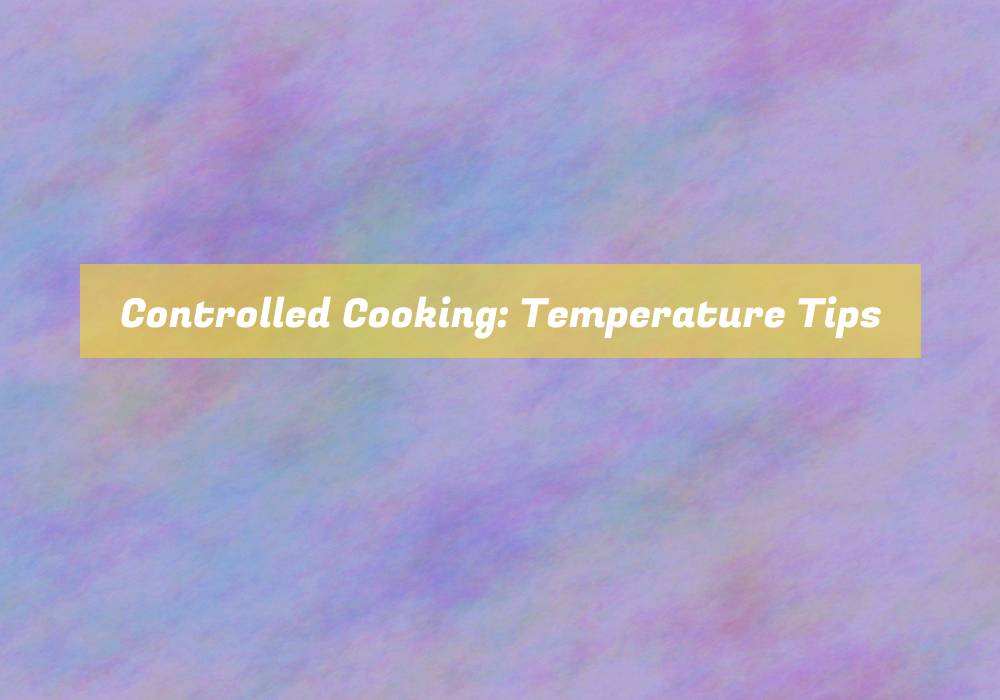Controlled Cooking: Temperature Tips
YouG??ve probably heard the old saying, G??If you canG??t stand the heat, get out of the kitchen.G??
When it comes to controlled cooking, mastering the art of temperature control is essential for creating perfectly cooked meals.
But how do you ensure that your food is cooked to perfection every time?
Stay tuned to discover the key temperature tips that will elevate your cooking game and impress even the most discerning of palates.
Understanding Ideal Cooking Temperatures
To ensure your dishes turn out perfectly, understanding the ideal cooking temperatures is essential. Different types of food require different cooking temperatures to achieve the best results. For example, when roasting meats, the ideal internal temperature for beef is 145-?F, while poultry should reach 165-?F. Understanding these ideal temperatures not only ensures that your food is safe to eat but also guarantees that itG??s cooked to perfection.
When it comes to baking, precision is key. Most baked goods require a specific oven temperature for the best outcome. For instance, cookies often bake best at 350-?F, while a delicate souffl+? may need a lower temperature of 325-?F to rise properly without burning. Understanding these ideal temperatures and following them closely can make a significant difference in the final result of your baked goods.
Moreover, even when grilling, knowing the ideal cooking temperatures is crucial. Whether itG??s a juicy steak or tender vegetables, having a good grasp of the recommended temperatures for each type of food ensures that theyG??re cooked to the desired level of doneness and flavor. Paying attention to these ideal cooking temperatures will undoubtedly elevate your culinary skills and the overall enjoyment of your meals.
Key Temperature Tips for Different Foods
When cooking different foods, itG??s crucial to understand the key temperature tips for each type of dish to achieve optimal results.
For poultry such as chicken and turkey, ensure that the internal temperature reaches 165-?F (73.9-?C) to guarantee that itG??s safe to eat.
When preparing ground meats like beef, pork, or lamb, the recommended internal temperature is 160-?F (71.1-?C).
For whole cuts of beef, pork, veal, and lamb, a temperature of 145-?F (62.8-?C) is ideal, while allowing the meat to rest for three minutes before carving or consuming.
When cooking seafood, the internal temperature should reach 145-?F (62.8-?C) to ensure that itG??s thoroughly cooked.
For reheating leftovers or pre-cooked foods, make sure to heat them to 165-?F (73.9-?C) to kill any potential bacteria.
Baking is also influenced by temperature; for yeast bread, the internal temperature should be around 190-210-?F (87.8-98.8-?C), while for cakes and other baked goods, the recommended temperature is typically 210-212-?F (98.8-100-?C).
Understanding these key temperature tips for different foods is essential for ensuring food safety and achieving the desired level of doneness.
Mastering Thermometer Techniques
Mastering thermometer techniques allows you to accurately measure the internal temperatures of different foods, ensuring both safety and optimal doneness. When using a food thermometer, always insert it into the thickest part of the food, away from bone, fat, or gristle, to get the most accurate reading. For thin foods like burgers or chicken breasts, insert the thermometer sideways. Make sure to clean the thermometer with hot, soapy water before and after each use to prevent cross-contamination.
Different thermometers have different temperature ranges and uses. Instant-read thermometers provide a quick reading and are perfect for checking the doneness of food. Oven-safe thermometers can be placed in the food before cooking and are ideal for dishes that require long cooking times, such as roasts. Probe thermometers are designed to remain in the food while cooking and are excellent for monitoring the temperature throughout the cooking process.
Achieving Precision in Controlled Cooking
Ensure accuracy and consistency in your cooking by mastering the art of precise temperature control. Achieving precision in controlled cooking requires attention to detail and the right tools.
Start by calibrating your oven and investing in an accurate probe thermometer for meats, ensuring your equipment is reliable.
When using a stovetop, adjust the heat to maintain a steady temperature, and for precise control, consider using a double boiler for delicate recipes.
Keep in mind that small adjustments can make a big difference, so monitor the temperature closely and make incremental changes as needed.
Additionally, utilizing a candy thermometer for tasks like deep-frying or making caramel can help achieve precise results.
When baking, position your oven rack at the recommended level, and avoid frequently opening the oven door to maintain a consistent temperature.
Conclusion
Now that you have a better understanding of ideal cooking temperatures and key tips for different foods, you can confidently master thermometer techniques and achieve precision in controlled cooking.
By paying attention to temperature and using the right tools, you can elevate your cooking skills and create delicious dishes every time.
Happy cooking!






